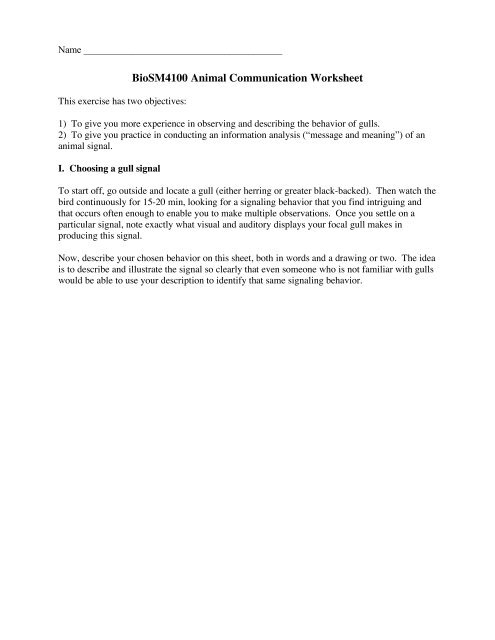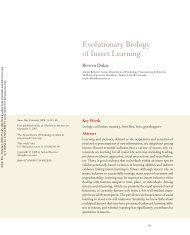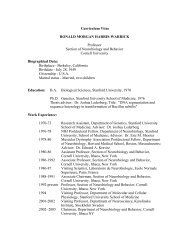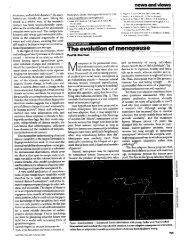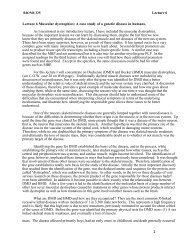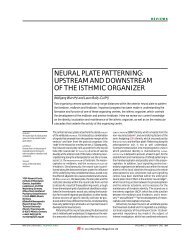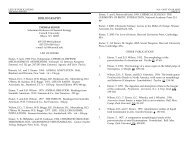BioSM4100 Animal Communication Worksheet
BioSM4100 Animal Communication Worksheet
BioSM4100 Animal Communication Worksheet
- No tags were found...
Create successful ePaper yourself
Turn your PDF publications into a flip-book with our unique Google optimized e-Paper software.
Name _________________________________________This exercise has two objectives:<strong>BioSM4100</strong> <strong>Animal</strong> <strong>Communication</strong> <strong>Worksheet</strong>1) To give you more experience in observing and describing the behavior of gulls.2) To give you practice in conducting an information analysis (“message and meaning”) of ananimal signal.I. Choosing a gull signalTo start off, go outside and locate a gull (either herring or greater black-backed). Then watch thebird continuously for 15-20 min, looking for a signaling behavior that you find intriguing andthat occurs often enough to enable you to make multiple observations. Once you settle on aparticular signal, note exactly what visual and auditory displays your focal gull makes inproducing this signal.Now, describe your chosen behavior on this sheet, both in words and a drawing or two. The ideais to describe and illustrate the signal so clearly that even someone who is not familiar with gullswould be able to use your description to identify that same signaling behavior.
Name _________________________________________2II. Information analysisNow, try to identify a consistent context associated with the production of the signal and aconsistent response to the signal. Remember, finding a situation of the sender that isconsistently associated with his/her production of the signal is the key to deciphering the signal’smessage, and finding a consistent response to the signal by the receiver is the key to decipheringthe signal’s meaning to the receiver. In the end, what do you conclude about the message andthe meaning of the signal?1. Consistent context of signal production2. Based on your observations, what do you think is the signal’s message?
Name _________________________________________33. Consistent response to signal (Be sure to specify the receiver you are studying. The sender’smate? His/her offspring? His/her neighbor? Other?)4. Based on your observations, what do you think is the signal’s meaning to the receiver youhave been observing?


